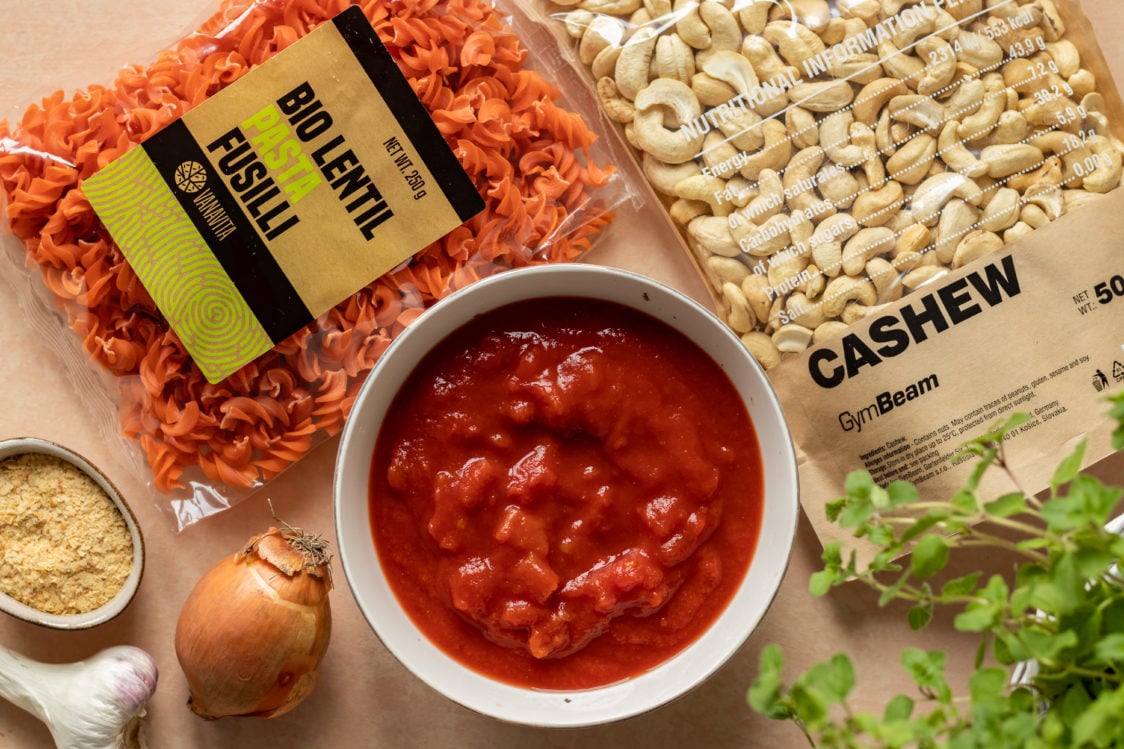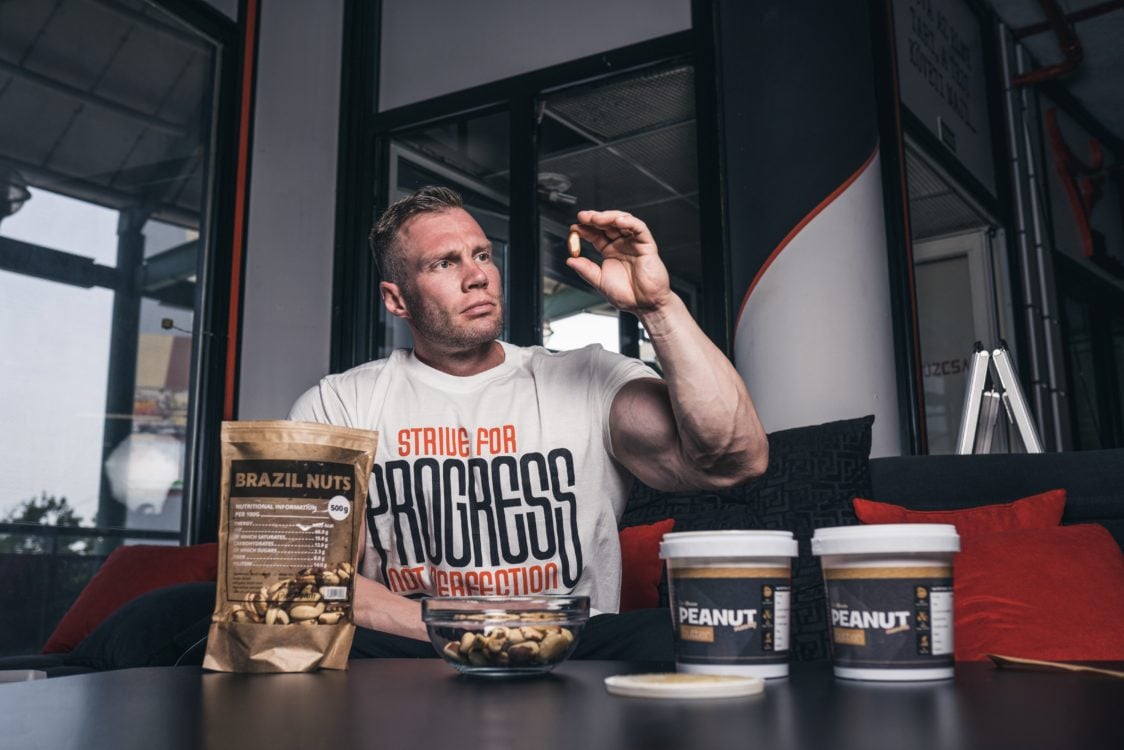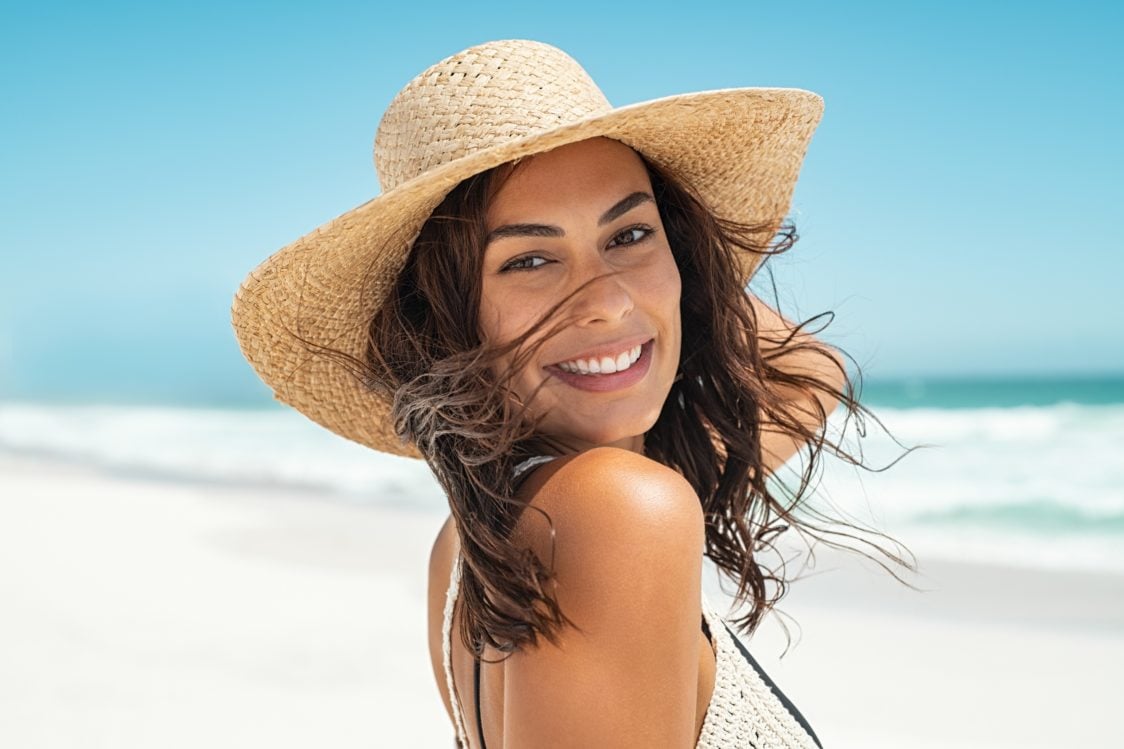Table of Contents
In the summer, most of us go on vacation, spend more time outdoors and also by the water. Long sunny days directly encourage outdoor activities and sunbathing. It is important to protect your eyes with sunglasses, your skin with creams with a sufficient SPF factor. It is also a good idea to cover your head, even during days when it is cloudy because UV rays can pass through them and negatively affect unprotected skin.
The next step for skin protection and maximum promotion of a healthy tan are selected nutrients that we consume naturally via our diet or by using food supplements in a targeted way. In addition, some of them contribute to skin pigmentation (colouring). This article will advise you what specific substances will help you achieve your desired tan, promote the youthful appearance of your skin and protect it from the negative effects of UV rays.
Which nutrients promote skin protection from UV rays?
Sufficient skin protection from UV rays is very important as these rays can negatively affect skin condition. Unprotected skin can easily burn from their effects. In addition, it is more prone to various diseases, premature ageing, wrinkles, loss of elasticity and natural hydration. When UV light is applied, the skin starts its natural defence mechanisms. For example, there is increased production of the skin pigment melanin. The more of this pigment you have in your skin, the darker your skin is, and at the same time, you are more protected from negative UV exposure. [1]

In addition to sunscreen, you can also protect your skin with nutrients found either in food or in a more concentrated form in food supplements. Thanks to these important substances, you will support its proper function, maintain a youthful appearance, an even natural skin colouring and the resulting effect of a tan.
Some of these have more effects on the skin, but can be broken down into two main categories for simplification.
How do specific nutrients help your body?
- protect against UV rays – antioxidants (carotenoids, zinc, selenium)
- promote skin pigmentation – tyrosine, copper, PABA
Nine substances to promote a healthy skin appearance and tan
Learn about the effects of selected nutrients on tanning and their sources and recommended intake. Simply because of this, you can include more foods in your diet for these rich substances and thus promote the bronzed appearance of your skin.

1. Beta-carotene will help protect the skin and its appearance
You may also sometimes come across beta-carotene under the name of provitamin A. The body produces vitamin A out of it. This is also important for maintaining healthy skin. Beta-carotene belongs to the family of carotenoids, which have strong antioxidant properties. They are characterized by yellow, red or orange colours and beta-carotene, with its yellow-red colour, is their typical representative.
Beta-carotene helps the skin to pick up harmful free radicals that can be produced by UV rays, protecting it from oxidative stress. This can cause increased wrinkles and premature skin ageing. According to experimental studies, it also protects the skin from the acute effects of sunlight, such as skin redness. Intake of beta-carotene is also associated with an overall attractive and healthy skin appearance. [1-3]
Food sources of beta-carotene:
The best food sources of beta-carotene include carrots, apricots, papaya, pumpkins, sweet potatoes, mangoes, peaches, spinach, broccoli, cabbage, peppers, peas, egg yolk, butter and salmon.
You will improve the absorption of beta-carotene from your diet by consuming it in conjunction with fats. For example, you can drizzle a salad of fresh spinach with olive oil or add a few walnuts to grated carrot. It can also be found in food supplements, which contain up to 15 mg of the active ingredient per tablet. [4-5]
Daily recommended intake of beta-carotene:
Beta-carotene does not have an official recommended daily intake. In most of the work that looked at the effect of this substance, the amount used varied from 15 to 180 mg per day. Higher doses can cause a yellow-orange skin colouration, which I don’t think any of us want, so everything in moderation. However, this symptom should resolve after a decrease in beta-carotene intake. [6-7]
If you need inspiration for cooking with carrots, try our fitness recipe for a light lentil salad with roasted carrots, avocado and feta cheese.
2. Lycopene protects the skin and works against redness
Lycopene is another carotenoid with antioxidant effects similar to beta-carotene. It also acts as a dye in plants and is behind the red hue of tomatoes. It strengthens the skin’s natural protective shield, which is designed to absorb harmful UV radiation. For example, this reduces the risk of ageing prematurely. According to studies, it can also reduce redness of the skin caused by the sun’s rays. In one, for example, participants consumed tomato paste for ten weeks. They had 40% less skin redness caused by sunburn than those who did not include the paste in their diet. While these are promising results, do not forget about basic protection against sunburn in the form of sunscreen. [8-9]
When the skin is exposed to the sun, the level of lycopene in the body is rapidly reduced. According to some, this may be due to its strong antioxidant activity. No such reduction in the amount of beta-carotene in the skin was observed. This shows that lycopene is probably even more effective at protecting against oxidative stress than beta-carotene. [10]
You might be interested in these products:
Food sources of lycopene:
The most important food sources of lycopene include tomato purée, tomatoes, watermelon, guava and pink grapefruit. But it is better absorbed from cooked foods than fresh. The addition of fat will also promote its use by the body. For example, tomato sauce for spaghetti is a great choice. It can also be found in food supplements that offer a simple form of consumption, and people who do not like tomatoes and other sources of this substance can benefit from the effect of lycopene. [11-12]
Daily recommended intake of lycopene:
Not specified. Some studies suggest that a range of 8 to 21 mg per day should be sufficient to achieve positive effects. [11-12]

3. Astaxanthin protects DNA and promotes collagen production
Astaxanthin is another active antioxidant of the carotenoid class. It also performs a protective function in the body and further contributes to maintaining healthy skin after its exposure to UV rays. It also promotes the production of other antioxidants and collagen. Studies also suggest it plays a role in preventing damage to human DNA which can be caused by excess sunlight. A number of studies have also shown promising results in slowing skin ageing and reducing wrinkles. According to some, it has up to ten times the antioxidant activity of other carotenoids. [13-16]
Food sources of astaxanthin:
The richest sources include salmon, prawns and other seafood. It is fat soluble, so combine it with quality sources such as ghee for better use by the body. [17-18]
Daily recommended intake of astaxanthin:
Astaxanthin does not have a recommended intake, but is normally taken at 2 – 12 mg per day. [17-18]

4. Lutein promotes a youthful skin appearance
Lutein is another carotenoid with antioxidant effects. Although usually associated with healthy vision, it also has a beneficial effect on the skin. It enhances the protective properties of the skin by improving its hydration and elasticity. Lipid peroxidation may occur under UV exposure to the skin. This may be one of the reasons for faster ageing of the skin and skin disease. Lutein has been shown in studies to strengthen protection of the skin against these negative effects. [19-21]
Interesting results came from research in which women took 20 mg of lutein daily for three months. Based on this, they improved the protective properties of the skin from harmful UV radiation by 22% compared to the control group not taking lutein. [22]
Food sources of lutein:
The body cannot produce lutein itself, so it is necessary to ensure its intake through a varied diet or supplements. Its sources include broccoli, spinach, kale, pumpkin, camu-camu powder, chlorella and egg yolk. Like other carotenoids, combine it with fats for better absorption. [23-24]
Daily recommended intake of lutein:
Lutein does not have a fixed daily recommended intake. However, beneficial effects were seen with amounts ranging from 6 to 20 mg per day. [23-24]
5. Tyrosine promotes natural skin colouring
Tyrosine is an amino acid commonly found in the body. It stands at the very beginning of melanogenesis, which produces the skin pigment melanin. This is what is behind bronzing of the skin, and it also protects the skin from the harmful effects of UV rays by partially absorbing them. So, thanks to tyrosine, you will promote skin colouration while strengthening its protection. [25-26]
Food sources of tyrosine:
The human body can make tyrosine, but you can also support it with food sources and supplements. You can find it especially in chicken and turkey meat, fish, dairy products and eggs. [27]
Daily recommended intake of tyrosine:
While Tyrosine does not have a daily recommended intake, it is most commonly taken at doses of 500 – 2000 mg per day to achieve the promised effects. [27]
If you are interested in what other areas of life tyrosine can help you, read Tyrosine – What Are Its Effects and What Role Does It Play in Stress, Depression or Weight Loss?

6. Zinc protects against UV rays and promotes collagen and keratin production
Zinc has a variety of important functions in the body. More than 200 enzyme reactions in the body depend on it. But most people associate it mainly with skin and nail health. The body needs it for the proper production of keratin and collagen. These are the main proteins you find in the skin. They are crucial for its elasticity, strength and resistance to external influences. Zinc also has antioxidant properties and protects the skin from UV rays. For this reason, it is also added to sunscreens. [28-30]
Food sources of zinc:
Our body cannot make zinc. That’s why its dietary and supplement intake is important. It can be found in many foods such as legumes, cereals, nuts, poultry meat, pork liver, seafood and dairy products. It is better absorbed into the body from animal sources than from vegetable sources, which contain fibre and phytates to slow absorption. Dietary supplements are typically a more concentrated source of zinc and can also be found in a chelate form, which the body can put to good use. [31-32]
Recommended daily intake of zinc:
According to the EFSA (European Food Safety Authority), the recommended daily intake of zinc is 7.5 – 12.7 mg for women and 9.4 – 16.3 mg for men. The upper intake limit which is still considered safe is normally 40 mg per day, but it makes no sense to take it daily. [31-32]
In case you don’t like classic legumes, you can try legume pasta, which doesn’t have such a strong legume taste. You can find inspiration in a fitness recipe for lentil pasta with creamy tomato sauce.

7. Selenium helps activate natural skin protection
Selenium is another mineral that can promote a healthy tan. It is essential for the activation of antioxidants (glutathione peroxidase and thioredoxin) produced by the human body. These protect the skin from oxidative stress caused by UV radiation. It also promotes the proper function of keratinocytes, which is the main cell in the skin that protects it from external influences. [33-34]
Food sources of selenium:
Like zinc, selenium cannot be produced. For this reason, it is important to focus on the consumption of foods containing it. You can also support your selenium intake by including supplements. The richest food sources are Brazil nuts, tuna, halibut, sardines, prawns, turkey, as well as unpeeled rice. [35-36]
Daily recommended intake of selenium:
The daily recommended intake of selenium according to the EFSA is 70 μg per day. The upper intake limit of selenium per day is 400 μg. [35-36]

8. Copper promotes skin pigmentation and its elasticity
Copper is important for the health and proper functioning of the skin. It is involved in its colouring. It is a building block for the formation of the enzyme tyrosinase, which is essential for the production of melanin. Furthermore, it acts as protection against the negative effects of UV radiation. A lack of copper can be due to reduced pigmentation of the hair and skin. This mineral is also involved in the formation of collagen and elastin. These proteins are responsible for the elasticity, firmness and elasticity of the skin. According to some studies, it can even reduce wrinkles and improve the appearance of the skin. [37–40]
Food sources of copper:
The human body alone cannot make copper. The amount of it in the body depends on the intake from external sources. The richest sources include seafood, nuts and seeds, mushrooms, wholegrain cereals, chocolate, beef or potatoes. [41-42]

Daily recommended intake of copper:
The daily recommended intake is set at 1.3 mg per day for adult women and 1.6 mg for men, according to the EFSA. A dose of 10 mg per day is considered safe. [41-42]
9. Para aminobenzoic acid is linked to skin discoloration and protects it
You may be hearing about para aminobenzoic acid for the first time. You may also come across it under the acronym PABA. It is part of the folic acid molecule and is closely related to the protection and proper function of the skin. It helps to protect against the negative effects of UV rays, so it counteracts premature skin ageing. Furthermore, it is also linked to skin discolouration and is used, for example, in pigmentation disorder, which occurs in vitiligo disease. [43-44]
Food sources of para aminobenzoic acid:
Our body can produce PABA. But if you don’t want to rely on natural synthesis alone, you can include foods that contain it in your diet. These include brewers’ yeast, meat, mushrooms, whole grain cereals and spinach. [45-46]
Daily recommended intake of para aminobenzoic acid:
The daily intake is not set for PABA, but in dietary supplements it most often appears in the amount of 500-1000 mg per day. [45–46]
Complex products for a healthy bronzed tan
The effects of carotenoids, zinc, selenium, copper, tyrosine and PABA complement each other. Some protect the skin from harmful UV rays, others promote its elasticity and firmness, and others are needed for proper pigmentation. All of the above are of natural origin and their intake can be supported by diet and supplements. [47]
High-quality complex products contain most of these complementary substances. This means you don’t need to take several capsules, but you just need one product that contains everything important. Such supplements include Sun Kiss, which contains carrot extract beta-carotene and 3 strong antioxidants in the form of lutein, lycopene and astaxanthin. Further, in the ingredients list you will find selenium, zinc and copper. Furthermore, the overall complex effect and effect of the product is supported by tyrosine and PABA content.
What are the main benefits of sunbathing?
Lying in the sun, perhaps by the water, is great relaxation, and it also gives you extra benefits. What are the main ones?
- You will acquire vitamin D
When your skin soaks up the sun’s rays, it starts a chemical reaction that results in vitamin D3. Enough vitamin D promotes immunity, bone health, as well as the metabolism of calcium and phosphorus.
- You will have a better mood
In the sun, the body produces more of the hormone serotonin. It is linked with a good mood, a sense of calm and stress reduction.
- You will sleep better
Sunlight also affects the levels of the sleep hormone melatonin. This will naturally make you feel the need for sleep after sunset, and in the morning with sunrise, the sun will drive you out of bed. [48-50]
If you have trouble sleeping, read the article How to Fall Asleep Quickly? Try These Simple Tips for a Better Sleep.

What should you remember?
While in the sun, you can stock up on vitamin D and also get a nice tan. At the same time, UV rays act on your skin, which can be harmful. Therefore, it is important to protect your skin with sunscreen.
You can also enhance its natural protection with substances such as carotenoids, zinc and selenium. You can promote healthy pigmentation with tyrosine, copper and para aminobenzoic acid. Food resources will help you with an adequate intake of these substances, as well as complex nutritional supplements to promote tanned skin.
Do you like sunbathing or do you rather avoid it? If you liked the article, be sure to share it with your friends.
[1] Sies, H., & Stahl, W. Nutritional protection against skin damage from sunlight. – https://doi.org/10.1146/annurev.nutr.24.012003.132320
[2] Stahl, W., & Sies, H. β-Carotene and other carotenoids in protection from sunlight. – https://doi.org/10.3945/ajcn.112.034819
[3] Foo, Y. Z., Rhodes, G., & Simmons, L. W. The carotenoid beta-carotene enhances facial color, attractiveness and perceived health, but not actual health, in humans. – https://doi.org/10.1093/beheco/arw188
[4] Healthline. Benefits of Beta Carotene and How to Get It. – https://www.healthline.com/health/beta-carotene-benefits
[5] Grune, T., Lietz, G., Palou, A., Ross, A. C., Stahl, W., Tang, G., Thurnham, D., Yin, S., & Biesalski, H. K. β-Carotene Is an Important Vitamin A Source for Humans. – https://doi.org/10.3945/jn.109.119024
[6] Griffin, R. M. Beta-Carotene Foods and Supplements. – https://www.webmd.com/vitamins-and-supplements/beta-carotene
[7] Ghavami, A., Coward, W. A., & Bluck, L. J. C. The effect of food preparation on the bioavailability of carotenoids from carrots using intrinsic labelling. – https://doi.org/10.1017/S000711451100451X
[8] Chernyshova, M. P., Pristenskiy, D. V., Lozbiakova, M. V., Chalyk, N. E., Bandaletova, T. Y., & Petyaev, I. M. Systemic and skin-targeting beneficial effects of lycopene-enriched ice cream: A pilot study. – https://doi.org/10.3168/jds.2018-15282
[9] Stahl, W., Heinrich, U., Wiseman, S., Eichler, O., Sies, H., & Tronnier, H. Dietary Tomato Paste Protects against Ultraviolet Light–Induced Erythema in Humans. – https://doi.org/10.1093/jn/131.5.1449
[10] Ribaya‐Mercado, J., GARMYN, M., Gilchrest, B., & RUSSELL, A. Biochemical and Molecular Roles of nutrients Skin Lycopene Is Destroyed Preferentially over ß- Carotene during ultraviolet Irradiation in Humans1’2.
[11] Healthline. Lycopene: Health Benefits and Top Food Sources. – https://www.healthline.com/nutrition/lycopene
[12] Story, E. N., Kopec, R. E., Schwartz, S. J., & Harris, G. K. An Update on the Health Effects of Tomato Lycopene. – https://doi.org/10.1146/annurev.food.102308.124120
[13] Kidd, P. Astaxanthin, cell membrane nutrient with diverse clinical benefits and anti-aging potential. – https://pubmed.ncbi.nlm.nih.gov/22214255/
[14] Ito, N., Seki, S., & Ueda, F. The Protective Role of Astaxanthin for UV-Induced Skin Deterioration in Healthy People—A Randomized, Double-Blind, Placebo-Controlled Trial. – https://doi.org/10.3390/nu10070817
[15] Vollmer, D. L., West, V. A., & Lephart, E. D. Enhancing Skin Health: By Oral Administration of Natural Compounds and Minerals with Implications to the Dermal Microbiome. – https://doi.org/10.3390/ijms19103059
[16] Ambati, R. R., Siew Moi, P., Ravi, S., & Aswathanarayana, R. G. Astaxanthin: Sources, Extraction, Stability, Biological Activities and Its Commercial Applications—A Review. – https://doi.org/10.3390/md12010128
[17] Davinelli, S., Nielsen, M. E., & Scapagnini, G. Astaxanthin in Skin Health, Repair, and Disease: A Comprehensive Review. – https://doi.org/10.3390/nu10040522
[18] Metcalf, E. & MPH. Astaxanthin. – https://www.webmd.com/vitamins-and-supplements/astaxanthin
[19] Juturu, V., Bowman, J. P., & Deshpande, J. Overall skin tone and skin-lightening-improving effects with oral supplementation of lutein and zeaxanthin isomers: A double-blind, placebo-controlled clinical trial. – https://doi.org/10.2147/CCID.S115519
[20] Michalak, M., Pierzak, M., Kręcisz, B., & Suliga, E. Bioactive Compounds for Skin Health: A Review. – https://doi.org/10.3390/nu13010203
[21] Staying Healthy Newsletter—Lutein, Antioxidants May Protect Skin as Well as The Eyes. – https://www.sciencebasedhealth.com/ContentPage.aspx?WebpageId=258
[22] Žmitek, K., Žmitek, J., Rogl Butina, M., Hristov, H., Pogačnik, T., & Pravst, I. Dietary lutein supplementation protects against ultraviolet-radiation-induced erythema: Results of a randomized double-blind placebo-controlled study – https://doi.org/10.1016/j.jff.2020.104265
[23] Foods High in Lutein – https://www.webmd.com/diet/foods-high-in-lutein
[24] What is Lutein? – https://foodinsight.org/what-is-lutein/
[25] Brown, D. A. Skin pigmentation enhancers. – https://doi.org/10.1016/S1011-1344(01)00212-3
[26] Frank, K., Patel, K., Lopez, G., & Willis, B. L-Tyrosine Research Analysis. – https://examine.com/supplements/l-tyrosine/
[27] Healthline. Tyrosine: Benefits, Side Effects and Dosage. – https://www.healthline.com/nutrition/tyrosine
[28] Gupta, M., Mahajan, V. K., Mehta, K. S., & Chauhan, P. S. Zinc Therapy in Dermatology: A Review. Dermatology – https://doi.org/10.1155/2014/709152
[29] Favrot, C., Beal, D., Blouin, E., Leccia, M. T., Roussel, A. M., & Rachidi, W. Age-Dependent Protective Effect of Selenium against UVA Irradiation in Primary Human Keratinocytes and the Associated DNA Repair Signature. – https://doi.org/10.1155/2018/5895439
[30] Zinek – WikiSkripta. – https://www.wikiskripta.eu/w/Zinek
[31] Scientific Opinion on Dietary Reference Values for zinc | European Food Safety Authority. – https://www.efsa.europa.eu/en/efsajournal/pub/3844
[32] Office of Dietary Supplements—Zinc. – https://ods.od.nih.gov/factsheets/Zinc-HealthProfessional/
[33] Park, K. Role of Micronutrients in Skin Health and Function. – https://doi.org/10.4062/biomolther.2015.003
[34] Sengupta, A., Lichti, U. F., Carlson, B. A., Ryscavage, A. O., Gladyshev, V. N., Yuspa, S. H., & Hatfield, D. L. Selenoproteins Are Essential for Proper Keratinocyte Function and Skin Development. – https://doi.org/10.1371/journal.pone.0012249
[35] Office of Dietary Supplements—Selenium. – https://ods.od.nih.gov/factsheets/Selenium-HealthProfessional/
[36] Scientific Opinion on Dietary Reference Values for selenium | European Food Safety Authority. (– https://www.efsa.europa.eu/en/efsajournal/pub/3846
[37] Brown, D. A. Skin pigmentation enhancers. – https://doi.org/10.1016/S1011-1344(01)00212-3
[38] Spritz, R. A., Ho, L., Furumura, M., & Hearing, V. J. Mutational analysis of copper binding by human tyrosinase. – https://doi.org/10.1111/1523-1747.ep12319351
[39] Copper Deficiency: Complete Guide (Updated 2021). – https://www.copperh2o.com/blogs/blog/copper-deficiency-the-complete-guide
[40] Healthline. 9 Signs and Symptoms of Copper Deficiency. – https://www.healthline.com/nutrition/copper-deficiency-symptoms
[41] Scientific Opinion on Dietary Reference Values for copper | European Food Safety Authority. – https://www.efsa.europa.eu/en/efsajournal/pub/4253
[42] Office of Dietary Supplements—Copper. – https://ods.od.nih.gov/factsheets/Copper-HealthProfessional/
[43] PABA (Para-Aminobenzoic Acid. – https://www.wnyurology.com/content.aspx?chunkiid=21831
[44] PARA-AMINOBENZOIC ACID (PABA): Overview, Uses, Side Effects, Precautions, Interactions, Dosing and Reviews. – https://www.webmd.com/vitamins/ai/ingredientmono-1004/para-aminobenzoic-acid-paba
[45] PeaceHealth. Health Topics A-Z. – https://www.peacehealth.org/medical-topics/id/hn-2894003
[46] Healthline. Vitamin B10 (PABA): Uses, Safety, and Dosage. – https://www.healthline.com/nutrition/vitamin-b-10
[47] Nathalie, P., & Manissier, P. Nutrition and nutritional supplementation: Impact on skin health and beauty. – https://doi.org/10.4161/derm.1.5.9706
[48] Healthline. What Are the Benefits of Sunlight? – https://www.healthline.com/health/depression/benefits-sunlight
[49] Baggerly, C. A., Cuomo, R. E., French, C. B., Garland, C. F., Gorham, E. D., Grant, W. B., Heaney, R. P., Holick, M. F., Hollis, B. W., McDonnell, S. L., Pittaway, M., Seaton, P., Wagner, C. L., & Wunsch, A. Sunlight and Vitamin D: Necessary for Public Health. – https://doi.org/10.1080/07315724.2015.1039866
[50] Mead, M. N. Benefits of Sunlight: A Bright Spot for Human Health. – https://www.ncbi.nlm.nih.gov/pmc/articles/PMC2290997/


Add a comment